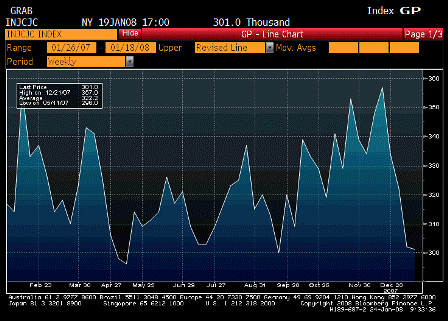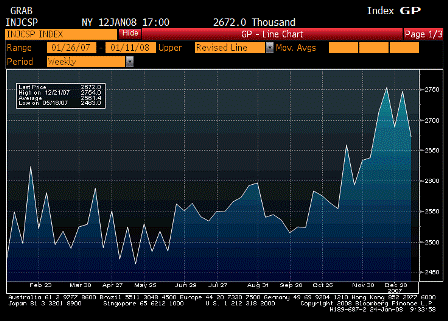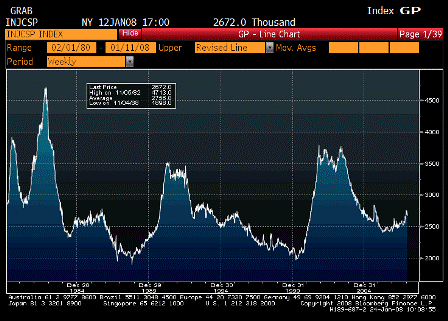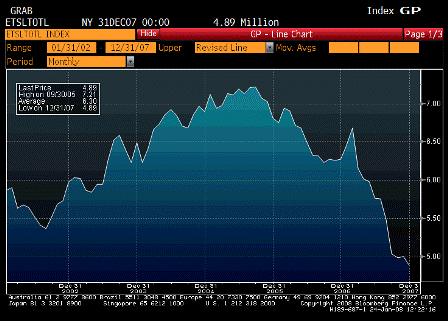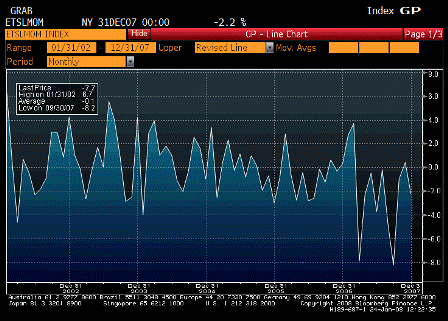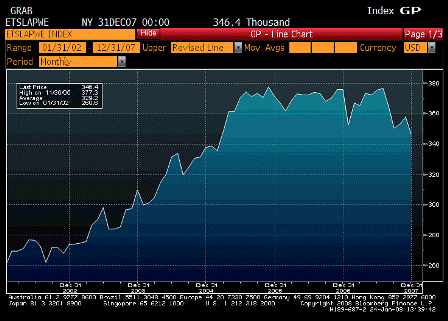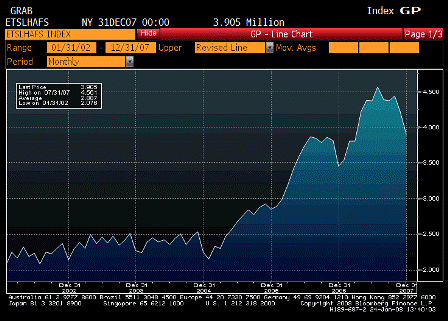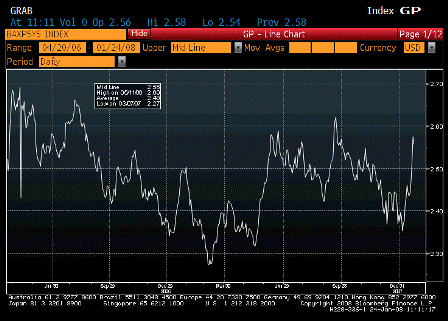Homeowners rushing to refinance mortgages
Federal Reserve’s surprise rate cut sparked a refinancing boom
This week’s surprise rate cut by the Federal Reserve not only held Wall Street and investors in thrall, it’s also kicked into high gear a rush by homeowners across the country to refinance their mortgages at today’s lower rates.
Thirty-year fixed-rate mortgages now carry an average interest rate of 5.57 percent, down from 5.75 percent last week and from 6.32 percent a year ago, according to a Bankrate.com national survey. That’s bringing them within shouting distance of the historic low of 5.21 percent set in June 2003, when the housing sector was expanding quickly and there was a stampede of mortgage refinancings.
(snip)
The Mortgage Bankers Association said refinancings last week reached their highest levels since April, 2004. The trade group’s Market Composite Index, a measure of mortgage loan application volume, rose 8.3 percent from the previous week’s level.
David Motley, president of Fort Worth-based Colonial National Mortgage, which originates loans in all 50 states, is expecting an even larger applications surge this week and beyond.
“For the last six to eight months all people have heard about is the subprime crunch,” he said. “There is an incorrect impression that because of the subprime mess regular people can’t get a loan or a refinancing right now.”
Seems the door is wide open now and seems a lot of potential defaults analysts were predicting may not happen.
Refinancing rush
The rush to refinance could get a further boost from the government’s tentative economic stimulus package. The package would allow government-sponsored Fannie Mae and Freddie Mac to buy mortgages worth as much as $729,750, up from a prior cap of $417,000 limit. This would make refinancing more feasible for some owners of expensive mortgages.
Yes, the government measures are all coming to bear from a variety of angles.
Colonial National’s Motley noted that mortgage rates were attractive before this week’s Fed action, but “the Fed move got everyone’s attention and people are now looking at rates again,” he said, adding that refinancing funds are “readily available to many Americans.”
Even so, experts say that securing refinancings at terms they want may prove difficult for owners whose homes have slumped in value.
Joe Dougherty, a media relations officer for RAND Corp. said his family’s four-bedroom colonial home in Haymarket, Va., was appraised at $500,000 several years ago, but he fears it is now worth only $450,000.
Dougherty hopes to refinance two home loans he holds on the house. He would like to combine them into a single 30-year fixed-rate mortgage and has discussed his situation with a loan officer friend. Dougherty’s calculations indicate a lower valuation that would nix the deal he wants, but he has scheduled a home appraisal.
What to do with stimulus rebate?
There also are fears that many banks, stung by losses on home loans to subprime borrowers, have adopted lending standards that will be too tough or taxing to meet. This is particularly worrisome for those whose credit scores have been hurt by heavy use of credit cards in recent years.
But for owners with good credit, the issue now may be more one of timing.
And that’s still the majority.
“I’m definitely interested in refinancing my mortgage, but I wonder if I should wait until after the Fed meeting next week,” said Matt Schmidt, a market specialist with Computer Task Group Inc. in Buffalo, N.Y. who bought a $150,000 Lewiston, N.Y., home three years ago.
Schmidt noted that the Fed, which holds a two-day meeting starting Tuesday, has signaled it is disposed to further rate cuts that could send mortgage rates still lower. So he doesn’t want to refinance too soon if even better rates will be available shortly.
This is very common.. When the Fed pauses, these people pull the trigger.
Also, the bond rally caused a lot of mortgage securities to shorten and hedges got bought in.
A sell off in bonds will have the reverse effect, and with the increased low coupon production, the convexity selling could be a lot more severe than the buying was on the way down.
♥

